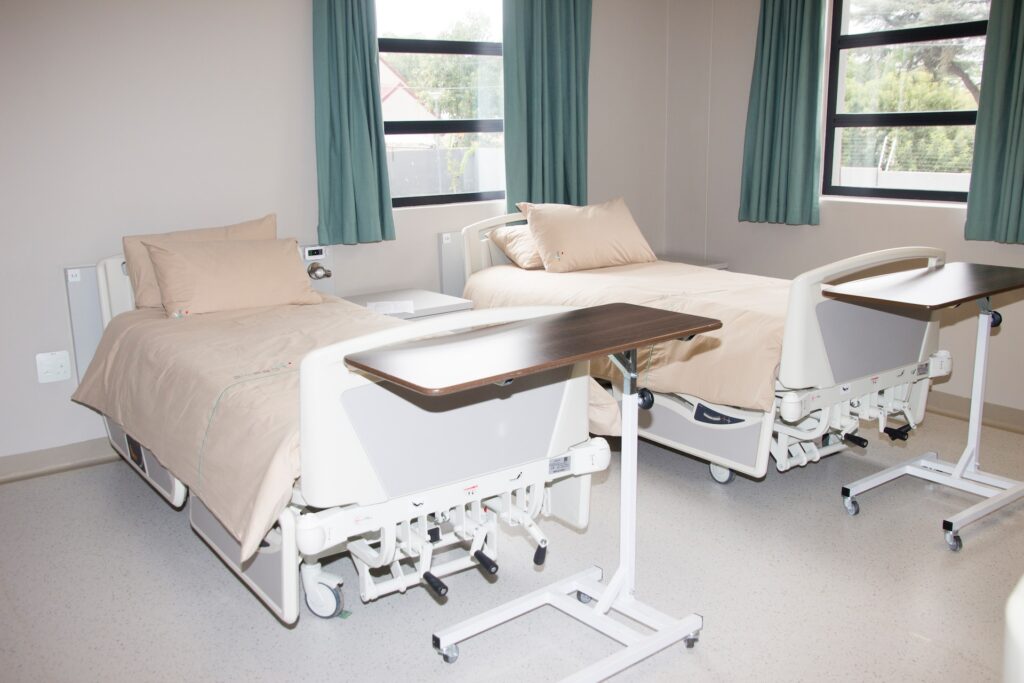Hospital Bedsores: Are You a Victim of Medical Malpractice?

Hospital Bedsores: Are You a Victim of Medical Malpractice?
Sadly, many patients in hospitals and other care facilities develop bedsores every year. They are a major concern and one that can often be prevented. Many, but not all, cases of pressure sores are the result of some level of negligence by care providers. If you or a loved one developed bedsores from a lack of proper care in a nursing facility, taking legal action can help you hold the staff responsible for their actions.
Hospital Bedsores: A Potentially Serious Condition
Bedsores, also called pressure ulcers, are a potentially serious condition that can lead to infection, amputation, and death. They start as areas of red or irritated skin that are often warm to the touch. However, if left untreated, they progress to open sores that involve progressively deeper layers of tissue. As they get worse, infection becomes more likely.
How Hospital Bedsores Form
Pressure ulcers form when a patient remains in one position for too long, usually more than a couple of hours. Lack of circulation in the affected area coupled with constant pressure causes tissue breakdown. Areas with thin skin, especially those over bony structures, are particularly vulnerable.
Stages of Bedsore Development
There are four stages of bedsore development, numbered one through four. At the earliest stage, the skin becomes red, inflamed, and painful. It may also turn purple. Corrective measures taken at this point can often prevent further damage. However, if left untreated, the bedsore will often turn into an open sore.
Stage two sores involve only surface tissue. They are very painful and may become infected without proper care. However, medical personnel can take action to reverse wound progression at this stage. Failure to treat early-stage bedsores might be considered medical malpractice.
Stage three pressure ulcers affect deeper layers of skin and soft tissue. As a result, they acquire a deeper, crater-like appearance. These can progress to stage four sores, where tendons and ligaments may lose circulation and become ulcerative. This type of sore is incredibly painful and prone to infections, which can possibly spread to other tissue or the bloodstream.
Florida nursing homes are not prepared to handle stage three or four bedsores. Patients with these ailments must be moved to a hospital that has the equipment and knowledge to treat them. Failure to transfer a patient to an appropriate facility is a likely sign of neglect and medical malpractice.
The Role of a Care Provider in Preventing Bedsores
Medical providers can help prevent pressure sores. Implementing a few basic measures can help reduce the incidence of bedsores among patients. However, it requires a sufficient number of staff and proper training, something that many nursing facilities struggle to maintain. A few of the most helpful actions include:
- Providing proper support, such as by using pressure-relieving mattresses and pillows
- Practicing proper patient skin care, including applying moisturizing creams
- Monitoring skin condition to detect potential pressure spots
- Addressing patient concerns about painful areas
- applying protective coverings over the affected area
Some patients are at higher risk of developing bedsores due to underlying conditions. People with diabetes, poor circulation and a lack of sensation in the skin are all more likely to suffer from sores. Cognitive impairment and malnutrition can further exacerbate problems. These patients require extra care to manage other symptoms which may contribute to pressure sore development.
Patients Rights to Proper Care
Every care provider, from CNAs to facility administrators, has a responsibility to provide adequate care to patients. This includes proper positioning to avoid pressure spots developing and monitoring to take early action if they do. Failure to uphold this duty of care can be considered negligence.
When your loved one is in a hospital or nursing facility, you expect her to receive proper care and attention. Unfortunately, persistent staff shortages at many skilled nursing facilities mean that there may not be adequate staff to attend to basic needs. Additionally, high turnover rates contribute to insufficient training on proper procedures for the staff that is present. These factors combine to undermine quality care and far too often result in patient neglect.
How To Identify Medical Malpractice
Medical malpractice occurs when the negligence of a provider (doctor, nurse, pharmacist, etc.) injures a patient in his care. To identify medical malpractice, you must first understand what it includes. The first component is that a medical care provider must have acted negligently.
Medical Negligence
Negligence is the deliberate failure to provide care that others with similar qualifications would expect. For example, failing to diagnose a condition or using improper treatment. There are many ways that care providers can fail to provide an appropriate standard of care, including:
- Not diagnosing medical conditions, such as early signs of bedsores
- Improper reading or insufficient analysis of test results or images
- Unnecessary or sub-standard surgical procedures
- Inadequate aftercare
- Failure to provide proper nutrition
- Not taking a complete medical history
Malpractice is not the same as an unfavorable treatment outcome. For example, if your loved one had surgery to correct a condition and the surgery is not successful through no fault of the doctors, then it is not malpractice. However, if an infection develops because of poor wound care while in the hospital, it may be malpractice.
Another thing to note is that Florida allows victims of medical negligence and malpractice up to two years to file a claim. You must keep this statute of limitations in mind as you seek care and compensation for bedsore injuries. The documentation you collect can help establish a concrete timeline for the neglect and injuries.
Medical Injury
The next component of medical malpractice involves the injury incurred. Florida statutes require victims of medical malpractice to prove a breach of prevailing standards of care. Some injuries may result from medical interventions that are not malpractice but are instead considered reasonably foreseeable results of treatment.
Therefore, you must show that the injury resulted from the negligence of care providers. Bedsores are largely preventable, so they are rarely considered a reasonably foreseeable result of hospitalization. However, documenting care standards at the facility may help improve your chances of proving negligence.
Documentation may include photos of the injuries and copies of charts showing when your loved one was repositioned, bathed and provided medications. If you speak to anyone in the hospital about your concerns, be sure to document those conversations as well. Communicate in writing whenever possible to make this easier.
It is also a good idea to look for other signs of improper care. Patients should be clean and well groomed, linens should be freshly changed and nutritionally appropriate meals should be delivered on a regular schedule. You might want to check care logs to see how often staff is checking in on your loved one. Finally, speak to your loved one about her care and whether she is comfortable.
Explore Your Options for Medical Malpractice Claims
Speaking with an experienced injury attorney can help you learn more about what medical malpractice looks like up close. This insight may make it easier to identify signs that your loved one is not receiving the care she deserves. It is also an excellent start to establishing a legal claim for compensation.
Our attorneys at Gorden & Partners have extensive experience litigating medical malpractice cases. We will take the pressure off you so you can provide support and care to your loved one as they recover from provider-caused injuries. Contact us to schedule a free case evaluation at one of our convenient Florida offices.
Free Case Evaluation
Verdicts & Settlements
Jury verdict for the wrongful death of a 63-year-old man survived by his widow.
Jury verdict for the wrongful death of a 97-year-old woman at an ALF.
Recovery for family of infant killed during bath at babysitter’s home.
Related News
- Preventing Bedsores: How Patients and Families Can Advocate for Better Care
- Frequently Asked Questions About Bedsores Lawsuits
- Choosing the Right Bedsores Lawyer: Factors to Consider
- Statute of Limitations for Bedsores Lawsuits: Don’t Miss Your Chance for Justice
- Compensation for Bedsorefs: What Victims and Families Should Know
- Legal Remedies for Nursing Home Abuse in Florida



